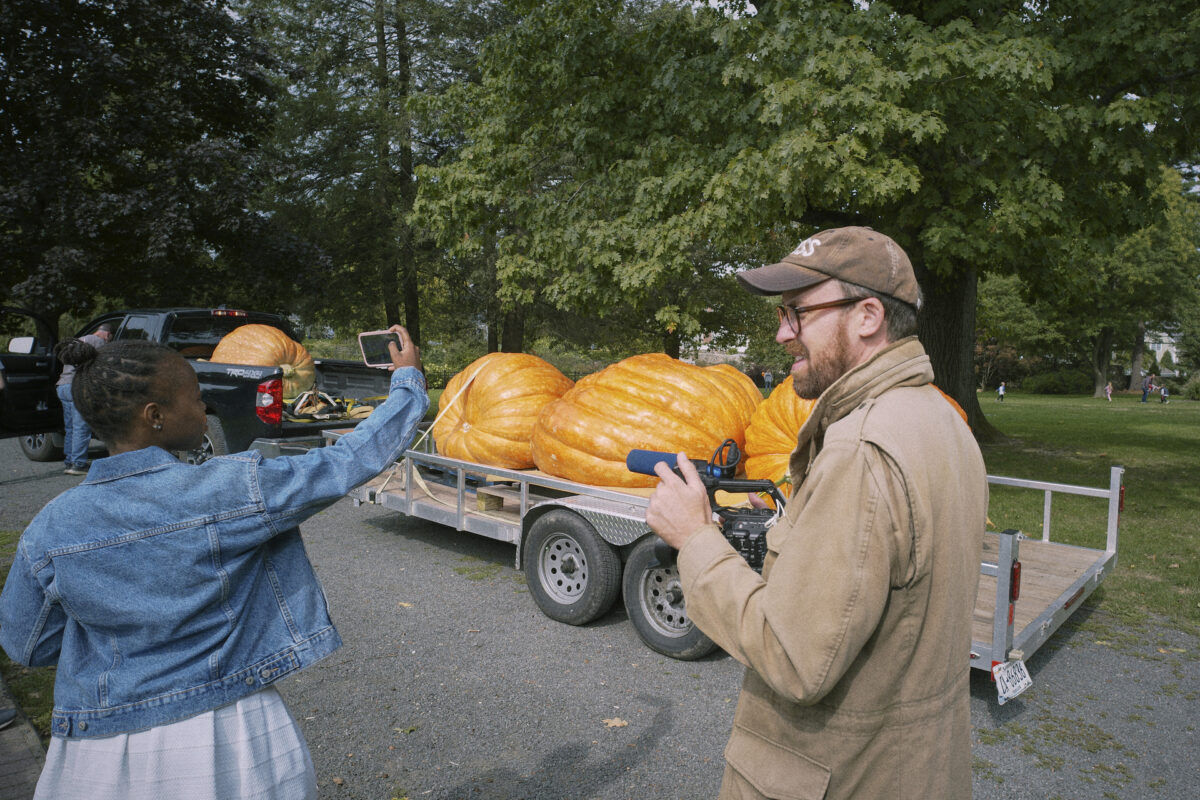
“How To With John Wilson” has mined a mix of absurd humor, poignancy, and occasional awe out of Wilson’s ability to capture arresting images of New Yorkers going about their day. Wilson routinely uses his hunger for imagery that blends both the ordinary and the ridiculous to craft a poetic portrait of New York. He uplifts and transforms images of people just standing, sitting, and (continually) waiting for the subway into expressions of human foibles and desires when paired with his voiceover attempting to understand or learn something. What is astounding, and perfectly in keeping with Wilson’s documentary style, is that the music of the show’s final moments reflects Wilson’s eye just as much as the images do.
An all-brass version of “La Vie En Rose” plays throughout the last minute or so of Episode 6, “How to Track Your Package,” with several shots of a band in a parking lot with parents watching a few feet away; it is both seemingly diegetically motivated as a performance that Wilson captured and motivated by his voiceover, the score becoming the voice of “the children of tomorrow” that will keep propelling New York City and all other human projects into our unknown future.
But the track selection arose out of Wilson’s inexhaustible hunt for imagery. Specifically, it arose out of Wilson’s quest for a video of a Pop-Tart package with three Pop-Tarts inside instead of the normal two. “I was looking for that for some reason. It never made it [into the show]. And I found someone on YouTube that had found [a three-pack of Pop-Tarts], but on the rest of their YouTube channel, they were part of a marching band and they had this amazing rendition of ‘La Vie En Rose’ that I had never heard before,” Wilson told IndieWire on the Filmmaker Toolkit podcast.
The random happenstance of looking at the YouTube archive of a kid who found an extra packed sleeve of Pop-Tarts, digging deeper, and stumbling onto something that then shapes the show’s final moving moments is a quintessentially “How To With John Wilson” series of events. Wilson does take ownership of the engineering that he has to do to create the gloriously incidental structure of the HBO series in the penultimate episode of the show (and got to blow up a car in the bargain); his love for that brass version of “La Vie En Rose” also led him to another bit of engineering.
“I listened to [the piece] day after day and I was just like, ‘I need to have this in [the show]. But the quality of the audio [in the video] is not presentable.’ So we actually reached out to [the marching band] and had them perform it for us. We did it like six or seven times and that was the one that made it into the cut,” Wilson said.
Wilson knew that was the music he wanted to end the series with. But he credits his editing team on Season 3, Sascha Stanton-Craven and Cori Wapnowska, and music supervisor Megan Currier for all providing brilliant suggestions throughout the season to help viewers move through each episode’s tonal shifts. It’s often the music in combination with Wilson’s voiceover that cues the viewer to take a breath, crack a smile, or lean in as the tension of an interaction increases.
“Initially, I asked for ‘Ren and Stimpy’ music, you know? For a lot of just classical stuff, but also some ‘70s electronic stuff,” Wilson said. “[Currier] gives us a lot of songs. She’ll give us a bunch of folders that have a specific mood or something like that, based off of what the sequence calls for. The editors are also constantly throwing in tracks that just work really well.”
Reflecting on the close-up look he’s gotten at New York over the course of the HBO series, Wilson felt the serendipity of capturing specific pieces of it before they vanished. “There’s footage of stuff in the first season that I never thought would disappear and it’s gone now,” Wilson said. “It makes me feel like we had this ‘Indiana Jones’ moment where we made it out just in time, where we were able to get that facade or talk to that person right before it was gone from the city forever.”
It would be too clumsy and too conceited for Wilson’s voiceover, but the filmmaker’s ability to create and/or find images that are so specific and yet seem so universal lines up with the time the final episode spends with Cyronics supporters. “How To With John Wilson” itself captures the constant churn of the city changing and Wilson’s desire to preserve what’s still there. “You take for granted that some of your favorite stuff is still around. So this feeling of loss that as a New Yorker, you kind of feel all the time — this was the most productive way I could think of to deal with that, by freezing it somewhere,” Wilson said.














